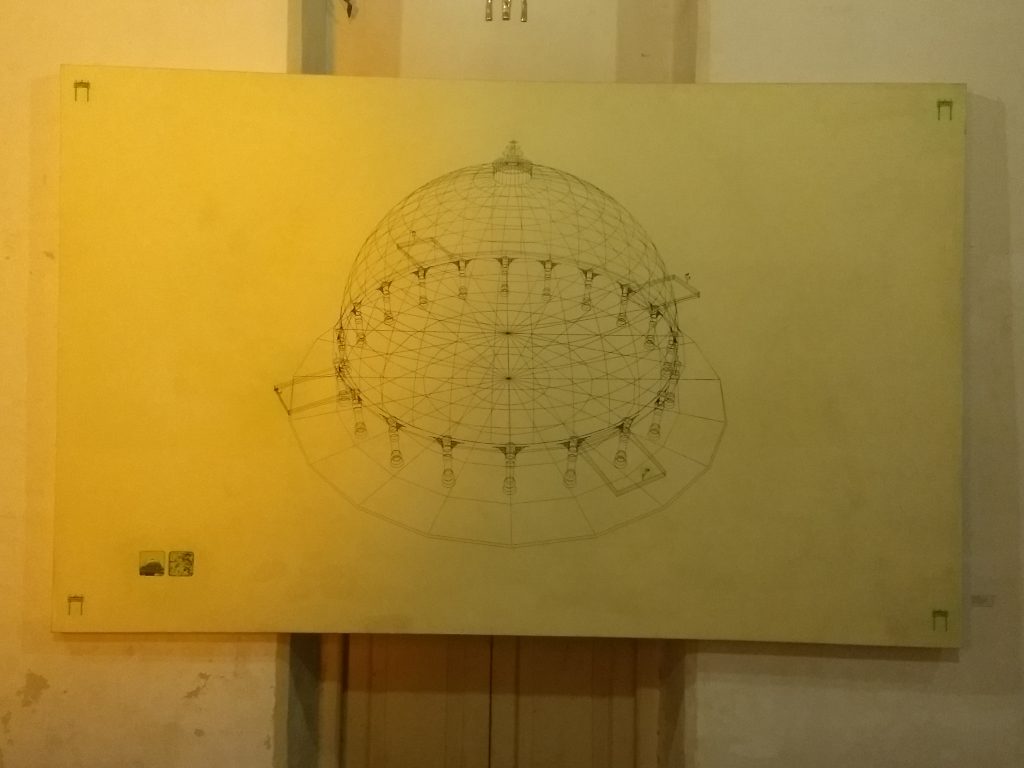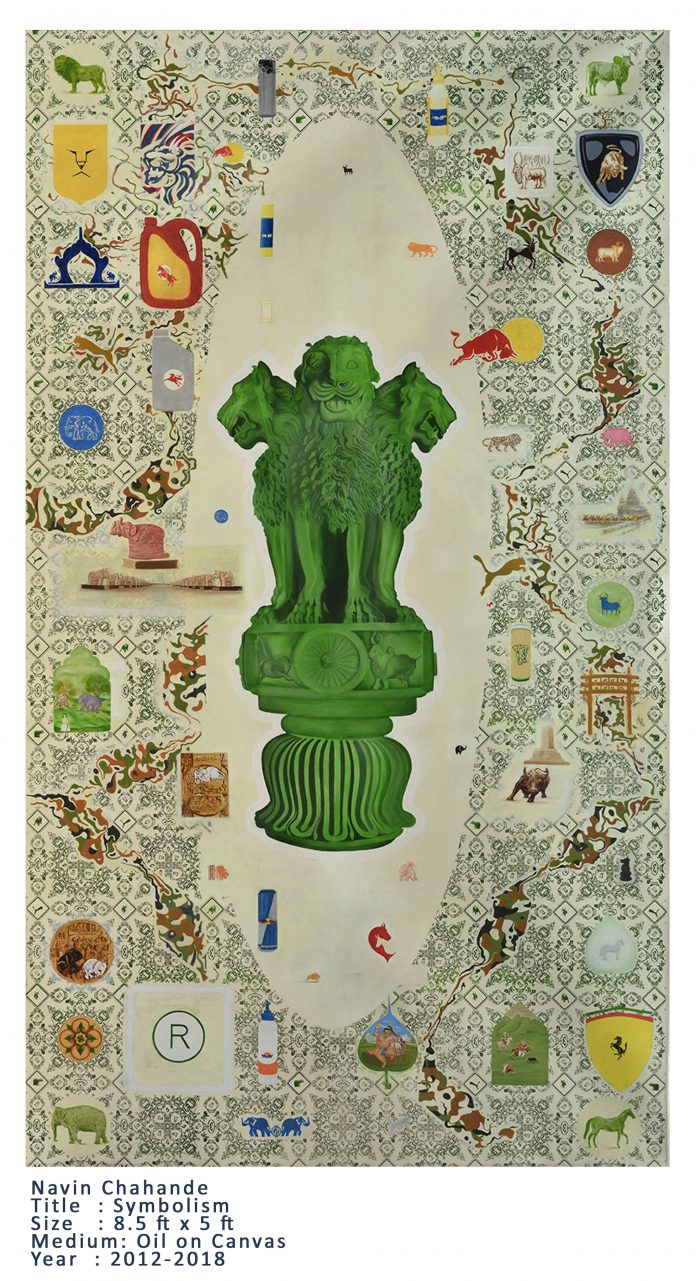By Daisy Katta, TwoCircles.net
Artist Navin Chahande does not like to prove his point using abstract forms. He says his art is direct. Navin is perhaps one of the few contemporary artist whose work deals with the subject of caste and Ambedkarism and this subject calls for direct intervention with its viewers rather than abstract layers. Navin Chahande, 36, grew up in Nagpur surrounded by visual arrays of depiction of Buddha and Ambedkar.
Navin says, “There is a reason why my works have Ambedkar as one of the main subjects.” He recalls the Budhha Vihara called Bhim Jyoti Buddha Vihara and a library called the Babasaheb Ambedkar Sandesh Vachanalaya near his house and the activities and celebration around these two places which shaped his creative imagination as a child. , Navin fondly recalls the photos of Ambedkar he saw as a child, like the photo of Ambedkar walking with his books, or the about the Mahad Satyagraha, left a lasting impression on his young mind. As a child Navin recalls that he would take a pencil and paper and try to copy the photos of Buddha and Ambedkar,his house was also filled with books of Ambedkar which his father would bring. This symbiotic relationship continued when Navin moved to Mumbai in 1997, to pursue his BFA from JJ School of Arts, where he stayed in a hostel next to BBD chawl where Ambedkar stayed during his former years and pursued his Masters from MSU, Baroda.
Navin has been a keen observer of daily life and the symbolism of Ambedkar in his life, and this is what led to the concept of his first solo show titled, I am the one who drew the head on the lion pillar. Navin was introduced to Namdeo Dhasal’s poetry in Aurangabad when he was working on an assignment. He says he immediately could relate to Dhasal’s poems. The title of the show is taken from the famous Namdeo Dhasal’s poem, We are approaching the harem of octopus (Octopuschya Sangathith Janankhanyakade).
We are approaching the organised harem of the octopus
I am the seal bearing the image of the bull dated March ’65
My properties are Mohenjodaro
I am the one who drew the head on the lion pillar
My ornamental daily weather
Radiates from the feet
From hand-to-hand, I release my catacombs
Go scatter curds milk butter in the courtyard
Organised harems of the octopus are approaching us
Namdeo Dhasal, translation by Dilip Chitre
Dhasal’s poem talks about the battle between Brahmanism and Buddhism. The Lion pillar is a symbol of Buddhist reign. Further, he talks about the emergence of the collective force of Dalit Panthers as a divisive force which is coming to destroy the hegemony of Brahmins. Navin’s work recreates the Lion Pillar, as a supreme symbol of Ambedkarite assertion, and the lines My properties are Mohenjodaro, seeks to understand the question of Mulnivasi. This is also a satire at the attempt of appropriation of Ambedkarite articulation by the upper castes.
Navin’s art is an ode to the daily symbolism in which to him depicts the things he has known all his life. His works depicts not only the things he is sure of but also his personal and political conflicts. In his work titled Between Left and Right is about a self-reflection of his political self. He himself is the subject of his art depicting his dilemma about the exploration of his political identity. Much of his work depicts shapes, space, direction, and sense of fluidity and movement of thoughts and actions, but always has an essence of an Ambedkarite ideology and symbolism. Navin’s curiosity with shapes, geometry is not just structural but throws open questions at the social structure of caste and questions the social fabric of the nation. One of his work which also depicts the Ashok Stambh is also a recollection of lecture he attended. “The teacher explained to us that the four animals depict four directions, so I have tried to understand the conceptual side of the everyday symbols in our life, I was attracted behind the kind of concepts the makers of such symbols had in their mind,” he says.
He mixes the historical with the contemporary, like the Pythagorean theorem he learnt in school, the Roundtable Conference he read about in history textbooks, or the mill chimneys of erstwhile Bombay which he saw as a student of JJ School of Arts. All make an appearance in his works as memories which are interconnected, but always has some kind of element especially from the childhood.

Another of Navin’s work is called the Circle of Equality, here shows us the Roundtable Conference with bespectacled Babasaheb Ambedkar looking towards the camera, Navin says, “We were taught the significance of the Roundtable conference in school, its not only about the freedom struggle but the future of Indians and what are the rights they will get, here the table is not square, it is round, a round table is about assertion, it depicts that everyone is equal.”
He says, “There is no intention of beautification in his work, what I am today is pure because of the observations I made in childhood and the surroundings”. Navin finds a lack of critical discourse in the world of art especially around the subject of caste. He further says, “ I felt a need to depict Ambedkar and Buddhism and give the subject of a visual surface because otherwise, no one else will.”
Navin Chahande’s show is currently on display till 9th September at –
Clark House Initative,
Ground Floor, Clark House building,
8 Nathalal Parekh Marg,
Old Wodehouse Road, Mumbai.



